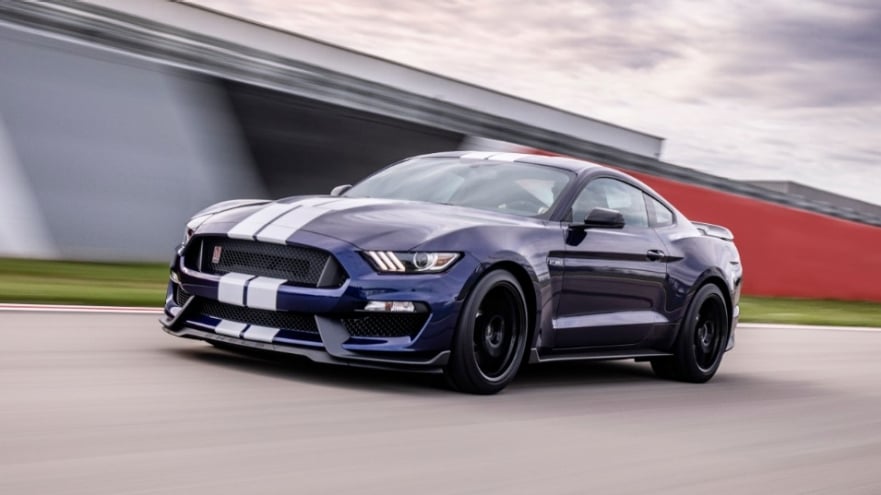Top 5 Mustangs
June 1, 2023
The Mustang came out in 1965 with 22,000 of them being sold on the first release date. The car that’s better and faster than a Chevy Camero has 7 total generations and here are the rated top 5.
Coming in the #1 spot we have the Mustang Shelby GT 350. In my opinion, the Shelby GT350, which was available for the 1965 and 1966 model times, is the ideal rendition of the original Mustang. They were each equipped with a 289 boxy inch K- law V8 machine. Power was increased from 271 to 306 power by installing a larger carburetor, a high-rise input manifold, and free-flowing exhaust manifolds. To make the introductory Mustang platform competitive on the racetrack, the Shelby plant produced a variety of variations. They were successful enough that the auto won the SCCA racing crown in its class three times in a row.
#2. The 1969 Ford Mustang Boss 429. Ford intended to use its brand-new 429 V8 machine in NASCAR racing, but in order to do so fairly, the machine had to be made accessible to anybody who wanted to buy one for a particular use. It was delicate to fit this massive block machine between the Mustang’s buffers, challenging a radically revised frontal suspense layout, which was finished by the Kar Kraft establishment in Michigan. The plant conditions for the NASCAR-specific machine were 375 power and 450 lb-ft. It was considered a dyspeptic beast when not pushed at full throttle, but when driven that way, it generated significantly further power than the plant-specified quantum. It’s still one of the most fashionable Mustang models ever produced.
#3. The 1971 Ford Mustang Mach 1. The Mustang 351 Mach 1 270hp features a naturally- aspirated V8 cylinder machine, Petrol motor, with the machine law Cleveland CJ V8 Q- code, with a top speed of 123 mph (198 km/ h) and a check weight of 3646 lbs (1654 kgs). At 5400 rpm, this machine generates a maximum affair of 270 PS (266 bhp- 199 kW) and a maximum necklace of 408.0 Nm (300lb. ft). The power is transferred to the road via reverse-wheel drive (RWD) and a four-speed primer transmission. The Mustang (MY 71) includes Coil springs, which are important for road grip, handling characteristics, and ride comfort. Front suspension, anti-roll bar, and semi-elliptic splint springs are standard. hinder suspense with a De Dion axle.
#4. The 1978 Shoal Mustang II King Cobra. The alternate-generation Mustang debuted in 1974 as an entirely new vehicle, with major advancements urged by the oil painting extremity. The Mustang II, which is lower and less important, is momentarily regarded as the least desirable pony vehicle to bear the Mustang emblem. But it was not all that horrible. While limited power was a concern, the Mustang II was actually rather successful, with periodic deals from 1974 through 1978 exceeding those from 1969 to 1973. The King Cobra is the nicest Mustang trim of this period. It appeared like a full-fledged muscle vehicle when unveiled in 1978, the Mustang II’s final time on the request. The large splitter, hinder sect, bulged hood, and stripes made it feel aggressive and meritorious of the Mustang moniker. The 4.9- liter V8 machine under the hood produced 133 power, yet a 0 to 60 mph time of 10 seconds was respectable for the time.
#5. The 1993 Shoal Mustang SVT Cobra R. Ford decided to end the third generation Mustang with a new performance variant rather than ending manufacture after the 1993 model time.The series also includes the Cobra R, a vehicle with increased aggression. The” R” stood for” Race,” and other corridors were taken out to make the auto lights. Air exertion, fog lights, back seats, a radio, speakers, wiring, and an antenna were all absent from the Cobra R. It also included stronger thickets, malleable Koni shocks and struts, Eibach springs, and a stronger lattice. The V8 machine’s 235 power and 280 pound base of necklace allowed the SVT Cobra R to accelerate from 0 to 60 mph in 5.7 seconds.








